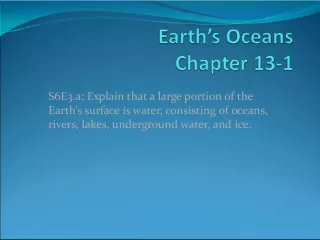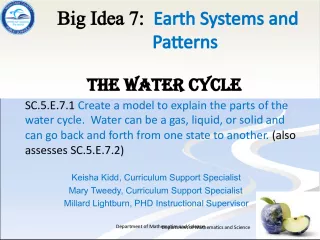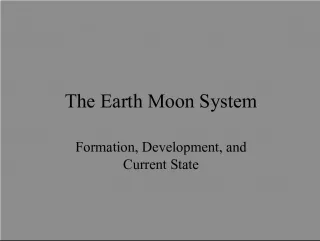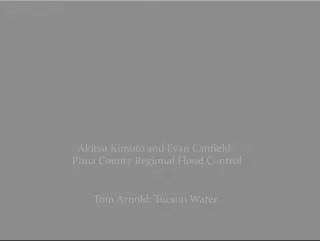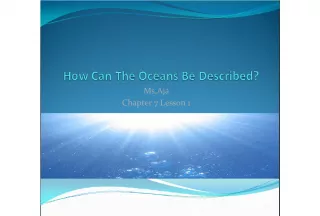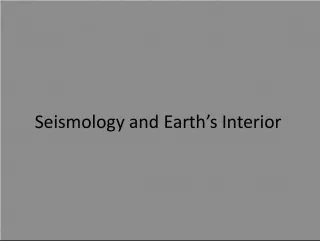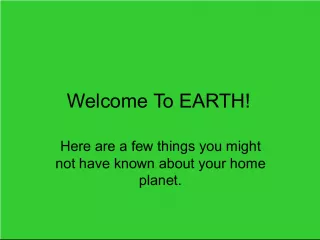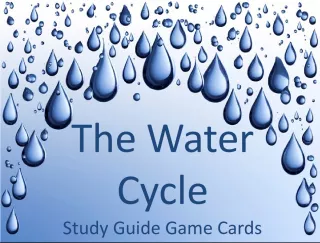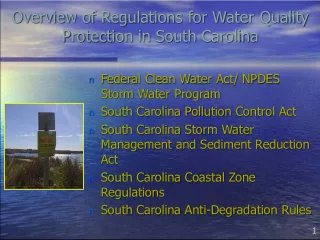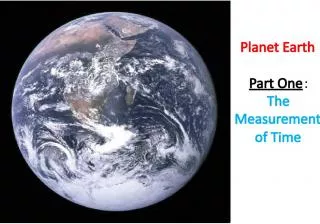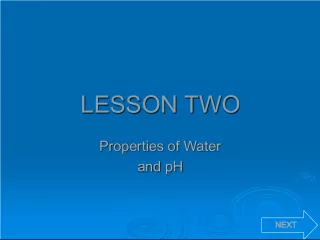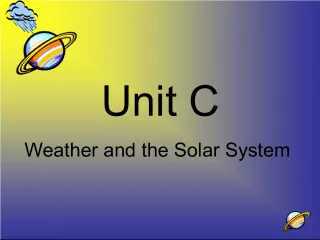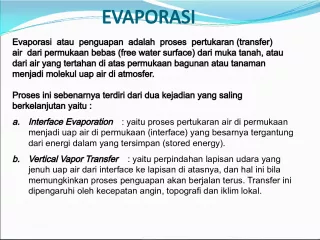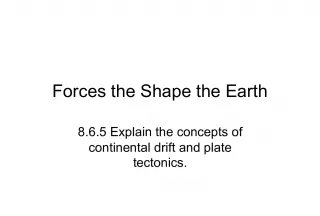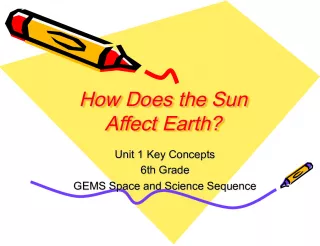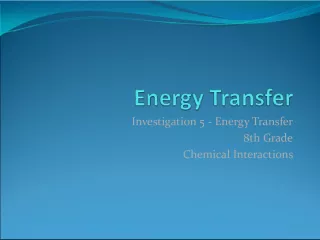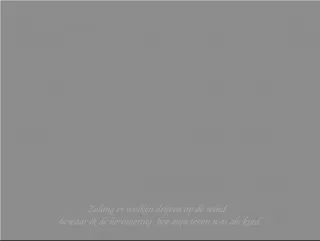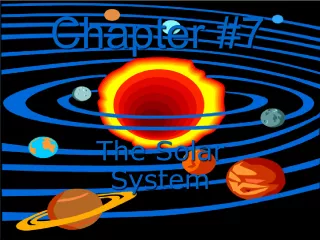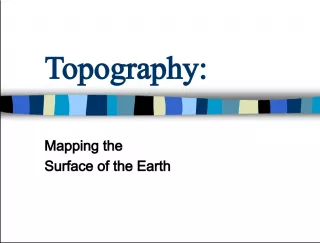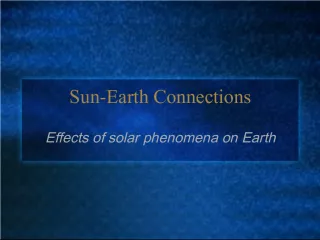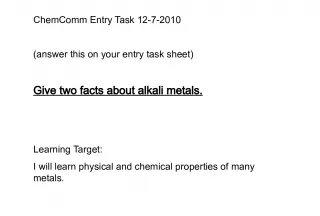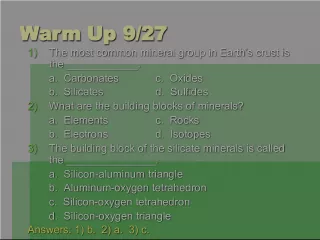Water on Earth


Chapter 7, Sections 1-4, SOL 6-7 discuss how Earth is known as the water planet because nearly 70% of it is made up of water. However, only about
- Uploaded on | 0 Views
-
 pedrowilliams
pedrowilliams
About Water on Earth
PowerPoint presentation about 'Water on Earth'. This presentation describes the topic on Chapter 7, Sections 1-4, SOL 6-7 discuss how Earth is known as the water planet because nearly 70% of it is made up of water. However, only about. The key topics included in this slideshow are . Download this presentation absolutely free.
Presentation Transcript
Slide1Chapter 7 Sections 1-4SOL 6.7
Slide2Earth is called the “water planet” becausenearly ¾ of Earth is made up of water. 97% salt water 3% fresh water Less than 1% of the water on Earth is usable to humans. CFU: How much of the water on Earth is usable?
Slide3Water is found in several forms on Earth,including: Oceans Ice (glaciers) Rivers and lakes Groundwater Far more fresh water is found underground than in all of Earth's rivers and lakes. CFU: Is there more freshwater above ground or below ground?
Slide4In addition to household purposes, people usewater for agriculture, industry, transportation and recreation.
Slide5Water is also important for living things togrow, reproduce, and carry out other important processes. Example: Plants need water to carry out photosynthesis.
Slide6A river and all its tributaries together makeup a river system. tributaries=the smaller streams and rivers that feed into a main river due to the pull of gravity. CFU: What is a river system?
Slide7All the water in a river system drains intothe main river. The land area that supplies water to a river system is called a watershed (also called drainage basins). CFU: What is a watershed?
Slide8Virginia has many watersheds. The largest watershed in VA is the James River Watershed which stretches from Chesapeake Bay to the Virginia/West Virginia border. The smallest watershed in VA is the Yadkin Watershed which stretches into North Carolina. CFU: What is the largest watershed in VA?
Slide11One watershed is separated from anotherby a ridge of land called a divide. Streams on each side of the divide flow in different directions. The Continental Divide is the longest divide in North America. CFU: What is a divide?
Slide12A flood occurs when the volume of water ina river increases so much that the river overflows its channel. Flood water has a lot of energy and can uproot trees and wash away bridges and houses.
Slide13Ponds and lakes form when water collectsin hollows and low-lying areas of land. They are made up of still, or standing water. Ponds are generally smaller and shallower than lakes. CFU: What is the difference between ponds and lakes?
Slide14Ponds have many plant species living in thembecause of how shallow they are, which allows sunlight to reach all the way to the bottom. The bottom of a pond is usually covered with mud and algae. Not all ponds exist-year round. Some dry up in the summer and reappear when runoff from spring rains and melting snow collects in low areas. CFU: Why do ponds have a lot of plant species in them?
Slide15Most lakes are deep enough that sun doesnot reach all the way to the bottom. A lake bottom may usually consist of sand, pebbles or rock. CFU: Why is a lake’s bottom usually rocks and pebbles?
Slide16People can create a lake by building a damacross a river. The lake may be used for supplying drinking water, irrigating fields or for boating and fishing. A reservoir is a lake that stores water for human use. CFU: What is a reservoir?
Slide17A lake environment can gradually change over time.
Slide18When a glacier reaches the seacoast,icebergs form. About 90% of an iceberg lies below the surface. The underwater part is a hazard to ships because it is often much wider than the visible part. CFU: How much of an iceberg is above the surface?
Slide19Groundwater comes from precipitation thatsoaks into the ground instead of evaporating. Water underground trickles down between particles of soil and through cracks and spaces in layers of rock. People can bring groundwater to the surface through the use of a well. CFU: How do people usually get water from underground?
Slide20a wetland is an area of land that is covered with ashallow layer of water during some or all of the year. They form in places where water is trapped in low areas or where groundwater seeps onto the surface of the land. Examples: marshes, swamps and bogs CFU: What is a wetland?
Slide21Because of their sheltered waters and richsupply of nutrients, wetlands provide habitats for many living things. Wetlands also naturally filter water and help control floods by absorbing extra runoff from heavy rains. CFU: Give two reasons why wetlands are beneficial to us?
Slide22The Florida Everglades and other wetlands areprotected by laws to protect many endangered species that live there.
